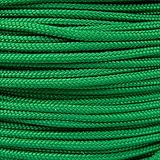Mastering Survival Fishing: Catch and Cook Your Wilderness Meal on a Stick
Venturing into the wild often brings a deep appreciation for self-reliance and the raw beauty of nature. However, true wilderness survival sometimes demands more than just admiration—it requires skill, resourcefulness, and the ability to procure your own food. The accompanying video provides a fantastic, gritty glimpse into exactly that: the fundamental art of survival fishing and preparing your catch over an open fire, proving that a delicious meal is always possible, even with minimal gear.
Imagine finding yourself deep in the backcountry, far from civilization, with hunger gnawing. Traditional fishing gear might be absent, but the primal urge to eat remains. This is where the profound value of survival fishing shines. It isn’t just about catching dinner; it’s about connecting with ancient skills and proving your capability in any situation. Learning how to catch and cook fish on a stick is a core bushcraft skill, transforming potential hardship into a rewarding experience.
The Art of Wilderness Angling: More Than Just a Pole
Effective survival fishing starts long before the line hits the water. Your ability to improvise and adapt is paramount. While the video showcases successful catches with a rudimentary setup, understanding the broader principles significantly enhances your chances.
Improvised fishing lines can be crafted from various materials found in nature or even from unexpected items in your kit. Strong plant fibers, inner bark from certain trees, or even unwound strands from paracord can serve as a decent line. A sturdy branch makes a passable rod, or you can simply fish by handlining. Hooks are often the biggest challenge. However, a small bone, thorn, or even a piece of metal shaped with a sharp rock can function as an improvised hook. The key is creativity and understanding basic physics.
Bait is another critical component. The video highlights shiners and leeches, which are excellent choices, readily available in many freshwater environments. Yet, a wider range of options exists. Grubs, worms, grasshoppers, crickets, small minnows, or even pieces of wild fruit or berries can attract fish. Observe your surroundings; what insects or small creatures are abundant near the water? These are often the natural diet of local fish, making them prime bait.
Understanding fish behavior is equally important. Fish typically feed more actively at dawn and dusk. They often seek cover near submerged logs, rocks, or overhanging vegetation. These are prime locations to present your improvised bait. Patience becomes your most valuable tool in these scenarios. A keen eye and quiet approach are vital for a successful catch when you are survival fishing.
From Catch to Clean: Field Dressing for Flavor and Freshness
Once you’ve landed a fish, as demonstrated in the video, proper field dressing is crucial for preserving its freshness and ensuring a delicious meal. The narrator vividly shows a technique for bleeding out the fish by severing the main vein and gills. This method is incredibly effective.
Bleeding the fish immediately after capture significantly improves the taste and quality of the meat. Blood left in the flesh can impart a “fishy” or metallic flavor. To perform this, locate the main vein under the gills. A quick, decisive cut with a sharp knife, like the Mora shown in the video, severs this artery. Hold the fish upside down to allow gravity to assist the blood drainage. This process ensures cleaner, milder-tasting fillets, a noticeable difference when you are cooking a fish on a stick.
After bleeding, the next step is gutting. Make a shallow cut from the anus to the gill plate. Be careful not to puncture the intestines, as this can release unpleasant contents. Scoop out all internal organs, ensuring the cavity is clean. Some prefer to remove the gills and eyes as well. While scaling can be done with a knife or even a rock, the video’s direct approach of cooking with the skin on is common for primitive methods, protecting the meat from direct flame. For a truly fresh experience, as the narrator mentions, the quivering of a recently caught fish signals peak freshness, making for an unforgettable wilderness meal.
The Green Stick Method: Your Primitive Skewer
Cooking fish over an open fire requires a specific tool: a green stick. As the video highlights, finding a green, pliable piece of wood is essential. A dry stick will simply burn through before your fish is cooked, dropping your precious meal into the coals.
A green stick, still full of moisture, resists burning. Look for hardwoods like oak, maple, birch, or alder, as they tend to be sturdier and less likely to impart strong flavors. The stick should be thick enough to support the weight of your fish without snapping, but not so thick it’s unwieldy. A diameter of 1-2 inches is often ideal. Once you’ve selected your stick, prepare it by peeling off a section of bark where the fish will rest. This ensures a clean surface for your food. Sharpen one end into a point suitable for skewering the fish. For stability, create a notch or two along the stick to help hold the fish securely, preventing it from sliding off as it cooks.
The video demonstrates skewering the fish directly through the body. This is an efficient way to hold it. Alternatively, you can create a “spit roast” by splitting the stick partway down its length, inserting the fish into the split, and then tying the stick back together with natural cordage or pliable vines. This cradles the fish, offering more surface area exposure to the heat. Regardless of the method, position your green stick carefully over the coals, not directly in the flames. This allows for even cooking and prevents charring the exterior while leaving the inside raw. A well-prepared green stick is the cornerstone of cooking a fresh fish on a stick.
Fire-Cooked Feast: Grilling Your Fish Over Coals
The crackle of a campfire and the aroma of cooking fish are truly some of the most rewarding moments in a survival situation. However, successfully cooking your fish on a stick over an open fire involves more nuance than simply throwing it over flames. Heat management is key.
Start with a good bed of coals. Coals provide a more consistent and even heat than direct flames, which tend to scorch the outside of the fish. Build your fire, let it burn down to a strong ember stage, then rake the coals into a suitable cooking area. Position your skewered fish a few inches above the glowing coals. The distance will depend on the heat intensity; if it’s sizzling too quickly, raise it. If it’s not cooking, lower it slightly. Rotate the stick frequently to ensure all sides cook evenly. This prevents one side from burning while the other remains raw.
Seasoning, even in the wild, can elevate your meal. The video mentions Andy’s MD Outdoor Seasoning, “Medium Heat” Campfire Spice, highlighting how a pre-prepared blend can be a game-changer. If you don’t have commercial seasoning, look for wild edibles. Salt can sometimes be found from natural mineral deposits, though this is rare. More commonly, you can use wild herbs and spices. Wild garlic, ramps, pine needles (for a subtle flavor), or even certain barks can add interesting notes. Even a simple sprinkle of ash from the fire can add a unique, savory depth, though this is an acquired taste.
Cooking time varies greatly depending on the size of the fish and the heat of your coals. A good indicator of doneness is when the flesh turns opaque and flakes easily with a fork or a small stick. The video’s narrator clearly enjoys the fruits of his labor, emphasizing that the freshness of the catch is paramount. Eating that riverside shore lunch bass, cooked directly from the water onto a stick, is a prime example of wilderness culinary triumph.
Beyond the Basics: Enhancing Your Survival Fishing Skills
While catching and cooking fish on a stick is a foundational skill, expanding your knowledge of survival fishing can provide even greater security in the wild. Consider exploring other primitive fishing methods. Fish traps, woven from flexible branches and vines, can be highly effective for passive fishing in streams or shallow areas. Gillnets, made from natural fibers, can also be set across waterways to passively catch fish. Learning to identify local fish species and their habitats further improves your success rate. For instance, understanding that smallmouth bass prefer rocky areas with clear water helps you choose your fishing spot wisely.
Practice is truly the only way to master these skills. Don’t wait for a survival situation to try them out. Incorporate survival fishing into your regular camping or bushcraft outings. Experiment with different improvised baits, practice field dressing, and perfect your fire-cooking techniques. Each attempt builds confidence and refines your abilities. The satisfaction of providing for yourself directly from nature’s bounty is immense. Whether you’re a seasoned bushcrafter or just beginning your journey into self-reliance, the skills of survival fishing offer an empowering connection to the wilderness and a reliable source of sustenance.











